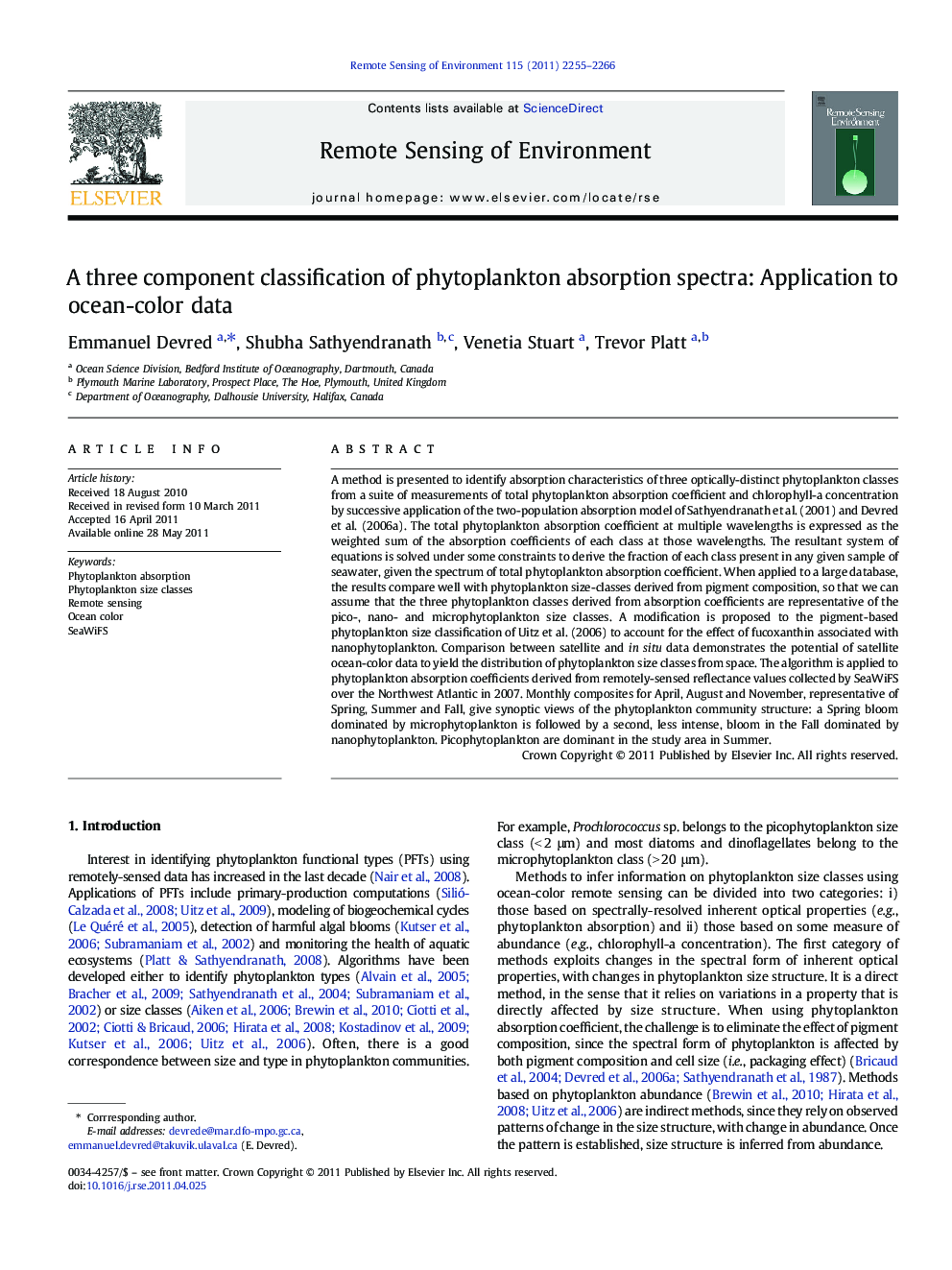| کد مقاله | کد نشریه | سال انتشار | مقاله انگلیسی | نسخه تمام متن |
|---|---|---|---|---|
| 4459433 | 1621288 | 2011 | 12 صفحه PDF | دانلود رایگان |

A method is presented to identify absorption characteristics of three optically-distinct phytoplankton classes from a suite of measurements of total phytoplankton absorption coefficient and chlorophyll-a concentration by successive application of the two-population absorption model of Sathyendranath et al. (2001) and Devred et al. (2006a). The total phytoplankton absorption coefficient at multiple wavelengths is expressed as the weighted sum of the absorption coefficients of each class at those wavelengths. The resultant system of equations is solved under some constraints to derive the fraction of each class present in any given sample of seawater, given the spectrum of total phytoplankton absorption coefficient. When applied to a large database, the results compare well with phytoplankton size-classes derived from pigment composition, so that we can assume that the three phytoplankton classes derived from absorption coefficients are representative of the pico-, nano- and microphytoplankton size classes. A modification is proposed to the pigment-based phytoplankton size classification of Uitz et al. (2006) to account for the effect of fucoxanthin associated with nanophytoplankton. Comparison between satellite and in situ data demonstrates the potential of satellite ocean-color data to yield the distribution of phytoplankton size classes from space. The algorithm is applied to phytoplankton absorption coefficients derived from remotely-sensed reflectance values collected by SeaWiFS over the Northwest Atlantic in 2007. Monthly composites for April, August and November, representative of Spring, Summer and Fall, give synoptic views of the phytoplankton community structure: a Spring bloom dominated by microphytoplankton is followed by a second, less intense, bloom in the Fall dominated by nanophytoplankton. Picophytoplankton are dominant in the study area in Summer.
Research highlights
► Three phytoplankton size classes are retrieved from their absorption coefficient.
► Pigment-based size classification is modified for fucoxanthin in nanophytoplankton.
► Spectrally-resolved ocean-color data can retrieve phytoplankton size structure.
► Seasonal succession of size classes is examined using remotely-sensed data.
Journal: Remote Sensing of Environment - Volume 115, Issue 9, 15 September 2011, Pages 2255–2266